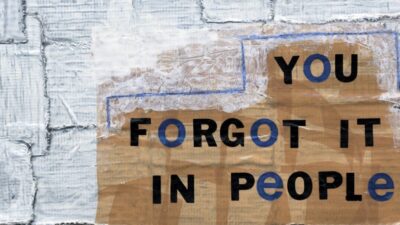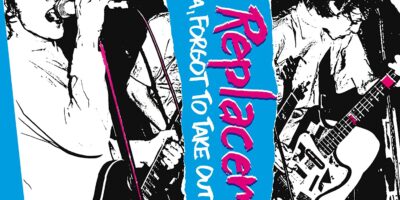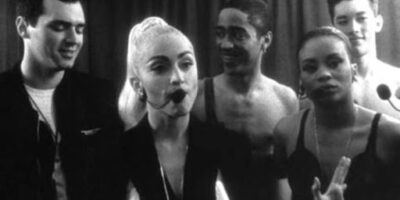In legendary minimalist composer Steve Reich’s 1968 manifesto Music As A Gradual Process, he says the following: “I am interested in perceptible processes. I want to be able to hear the process happening throughout the sounding music.” In this essay, he works to define the notion of process music, which “[does] not mean the process of composition, but rather pieces of music that are, literally, processes.”
William Basinski’s THE DISINTEGRATION LOOPS series fits Reich’s definition, perhaps process music’s closest brush with the popular mainstream (as opposed to the more academic, perhaps slightly ivory tower context these ideas are typically found in). The process behind the work is transparent: each individual loop is a real-time documentary record of a portion of the slow, reverberated erosion of the information on a single piece of tape. Occasionally intruded by Basinski’s Moog Voyager, the recording process is extraordinarily gradual, with the shortest of the numbered loops lasting 20 minutes and the longest (excerpted into three parts cut from the same recording, released on volumes I and IV of the series) running over 90 minutes. The four installments, taken as a whole, form a fairly remarkable and cohesive work, one of the most detailed and direct portraits of the mechanical and (if you must reach for further meaning) conceptual end of a recording medium you can find, a haunting elegy for the analog era, and, more famously, for something else.
The loops were finished by August of 2001 and released in installments from 2002 through 2003, but they are inexorably tied to the events of 9/11. The way the story is often told, Basinski watched the towers fall as his tapes finished digitizing—a story which is, in fact, too poetic to be true, as they’d been finished for weeks. While watching the unfolding destruction, he realized that the loops might make a fitting soundtrack, setting up his video camera and filming the sunset through the smoke as DISINTEGRATION LOOPS 1.1 played, stills from the footage he took later becoming album art. The covers of volumes II-IV appear to be unedited stills, but for the first installment, a change had been made. If you were to look solely at the front cover, it might appear subtle—a superimposed wisp of fabric in the smoke clouds on the left of the frame—but unfold to reveal the rear cover and you’ll see the whole story: a “portrait of William Basinski as the dead Thomas Chatterton,” a proto-Romantic poet and, more importantly, literary forger who killed himself at the age of 17. Basinski is, very literally, inserting himself into the aftermath of a tragedy, dressed as an artist known not only for their tragic death, but also for their deception.
Meaning-making in art is an extraordinarily personal thing, but music in particular seems to have a habit of finding itself attached to tragic metanarratives. Often, this happens unintentionally, and at the expense of the artist’s actual intent—take Belong’s OCTOBER LANGUAGE, an album often discussed as “THE DISINTEGRATION LOOPS of Hurricane Katrina” despite the New Orleans-based band’s insistent explanation that it was recorded before the storm, or Daniel Johnston’s straightforwardly appealing music being inseparable from the story of his mental health challenges that makes him an “outsider” artist rather than simply an artist. Basinski has created this narrative association on purpose, deliberately dispelling with any ambiguity in the piece while tacitly admitting its forged nature. If the title of THE DISINTEGRATION LOOPS offers instructions for the piece’s creation, the aesthetic pageantry surrounding it offers explicit instructions for its interpretation—Basinski has hitched his art to the wake of a terrorist attack (one which he believes was a controlled demolition, no less) and seemingly declared himself the event’s poet laureate.
In a 2012 interview with NPR, Basinski discussed the reception of THE DISINTEGRATION LOOPS purely in terms of the press and himself, saying “the critics had so much to dive into that it just took off and it saved my life.” The record is dedicated to the victims of 9/11, yes, but Basinski is its main character, the face in the clouds looking over New York City in the aftermath of disaster. Whenever an anniversary rolls around, he takes the opportunity to remind the world that he’s the protagonist, trotting out a stunt like his upcoming 20th anniversary concert (which was fittingly postponed due to COVID until 2022). The trick worked, and it was a phenomenally successful shortcut to respectability and an audience that prevented the LOOPS from finding the success it plainly deserves through natural means. It’s condescending to an audience who are more than capable of finding meaning in abstraction without being told what to read for, and the very victims the record is pledged to.
Why shouldn’t the trick have worked, though? Last time I was in New York City, I paid a visit (and $20) to the 9/11 Memorial and Museum, a mausoleum with a gift shop that charges for entry deep inside the foundation of the former World Trade Center towers. There’s a small section of the museum that gives examples of artistic responses to the attacks, and over the loudspeakers it plays Basinski’s work. The impact is instant; as cynical as I may have been about the commercialization of the overwhelming and desolate space, about the narrative gamesmanship the music plays, the meaning of the music was extraordinarily obvious. THE DISINTEGRATION LOOPS wasn’t shaped by 9/11, but it is about it. By predating the attacks, it’s the only piece of art to come out of them completely sidestepping any reactionary tendencies— it is nothing more or less than an impersonal documentary record of the auditory effects of destruction. Basinski’s five-hour opus remains simultaneously utterly inscrutable and entirely transparent. 20 years on, THE DISINTEGRATION LOOPS have found the respect, audience, and purpose that Basinski had been dreaming of, which it likely deserved from the start. My only wish is that he’d had given his listeners the chance to discover these things for themselves.
















Comments